There can be your advertisement
300x150
Unusual Solution: Moroccan Style in Interior Design
Oriental interiors are quite a rare phenomenon in Russian residential apartments and houses: most people prefer to live in the Western manner. However, the enchanting mix of various cultural traditions of Moroccan style is close to many. Moreover, this style fits perfectly for decorating even a typical small apartment. It is not necessary at all to recreate an Eastern fairy tale or try to arrange your home like a North African dwelling; Moroccan style allows for internationality and eclecticism — the presence of everyday elements in the interior is welcome.
1. Ode to Stone
Moroccan style does not fear interpretations and even loves improvisation, so in room finishing, a true Moroccan invention such as Tadelakt plaster can be replaced with something similar (sometimes even Venetian plaster is used). The key point is to achieve a glossy wall that resembles natural stone in cross-section, preferably marble or emerald. Moroccan style never knew wallpaper, but now, if they imitate mosaics or decorative tiles, their use is quite acceptable.
In Moroccan homes, it was common to make various niches in the walls for storage purposes — they were not highlighted by color or decoration. However, the ceiling received great attention; it could simply be painted blue (association with the sky) or decorated with wood featuring intricate carving.
Depending on the purpose and wealth of the household, Moroccan style was divided into simplified, which implied completely white walls and minimal decoration, and a more refined and sophisticated variant, now more recognizable. This branch is rich in color, often featuring terracotta, pink-red, and purple shades, as well as various techniques of execution.
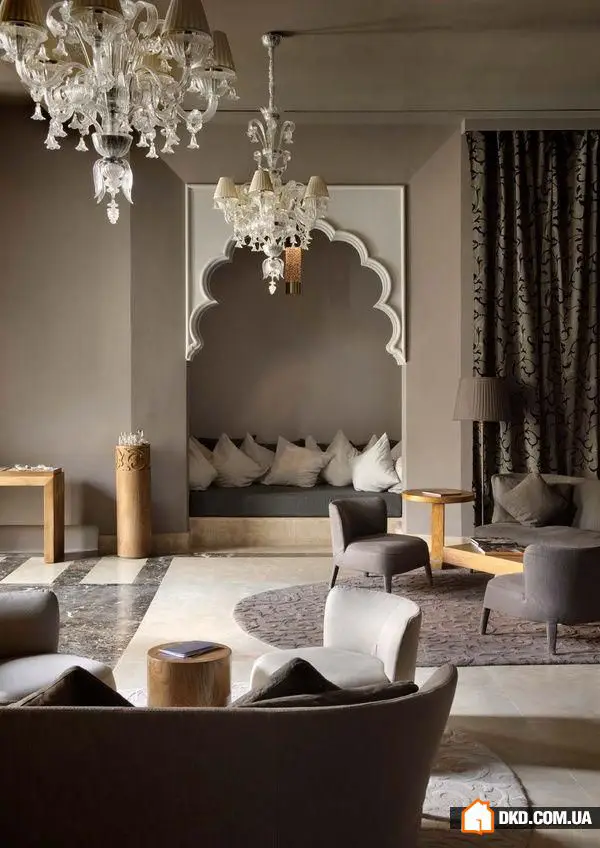
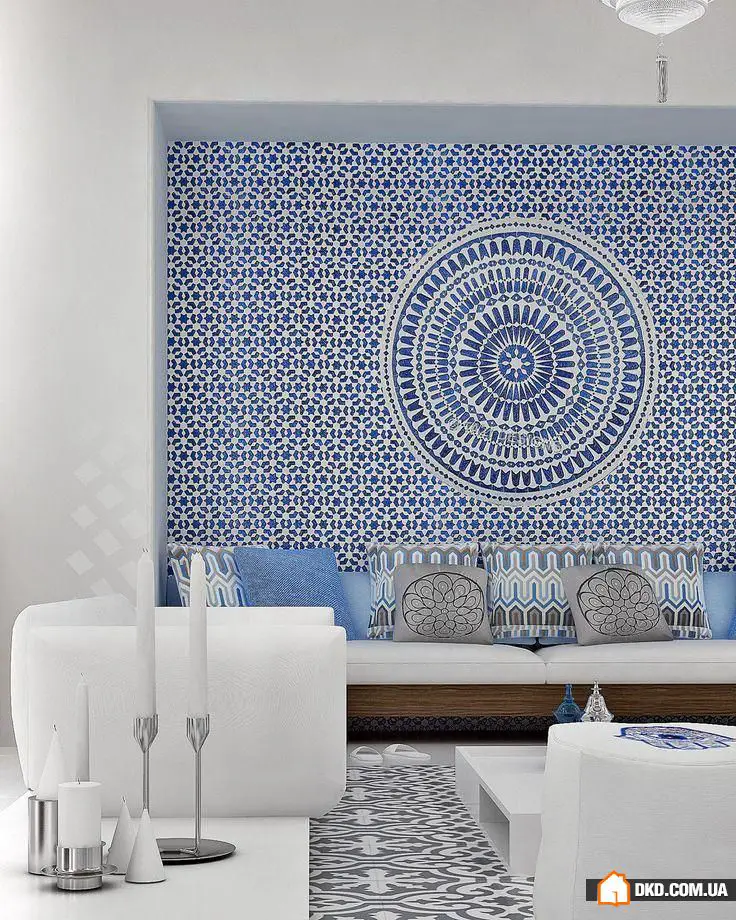

2. Aesthetics of Lines
To a large extent, Moroccan interiors are shaped by openings and arches – it is precisely these elements that make the space resemble a mysterious fairy-tale palace. Especially characteristic are doorways in the shape of an inverted horseshoe and pointed dome, as well as pointed vaults and semi-circular arches.
If styling in Moroccan style does not imply such complex structural solutions, a solution can be to imitate an arch or opening in a solid wall using a niche of the appropriate shape. Alternatively, a tent inside the room can create symmetrical openings through textile draping.
Such a simple and everyday object as an opening gains sacred meaning in Moroccan style, reminding of mosque portals, especially if the opening is painted in stripes that imitate colored bricks. The same columns originating from an Eastern temple are made without a base, as if growing out of the ground, supporting arches and infusing the room with spiritual meaning.


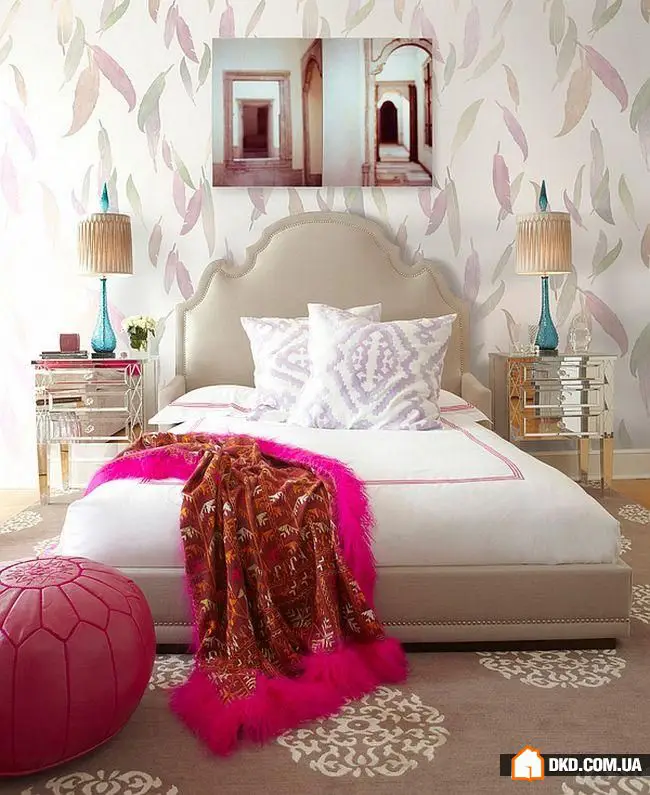
3. Relaxed Atmosphere
Furniture in Moroccan style has a distinctly expressive character and the spirit of mysterious Arabian nights. Low poufs and soft mats create a relaxed atmosphere of leisure and enjoyment of a reclining lifestyle. Therefore, in the new Moroccan style, lounges, large soft beds, and platforms designed for sitting are very popular.
Tables and stools are usually cast or made from dark woods. In both cases, the furniture is lace-like and patterned: either wood carving or artistic forging is used. Wood carving, in particular, is often pierced-through, imitating forging and adding transparency and lightness to bulky wardrobes and chests.
Very popular are the presence of patterned screens in interiors, which also serve as a kind of grid or veil, enveloping the space with even more mystery and secrecy.


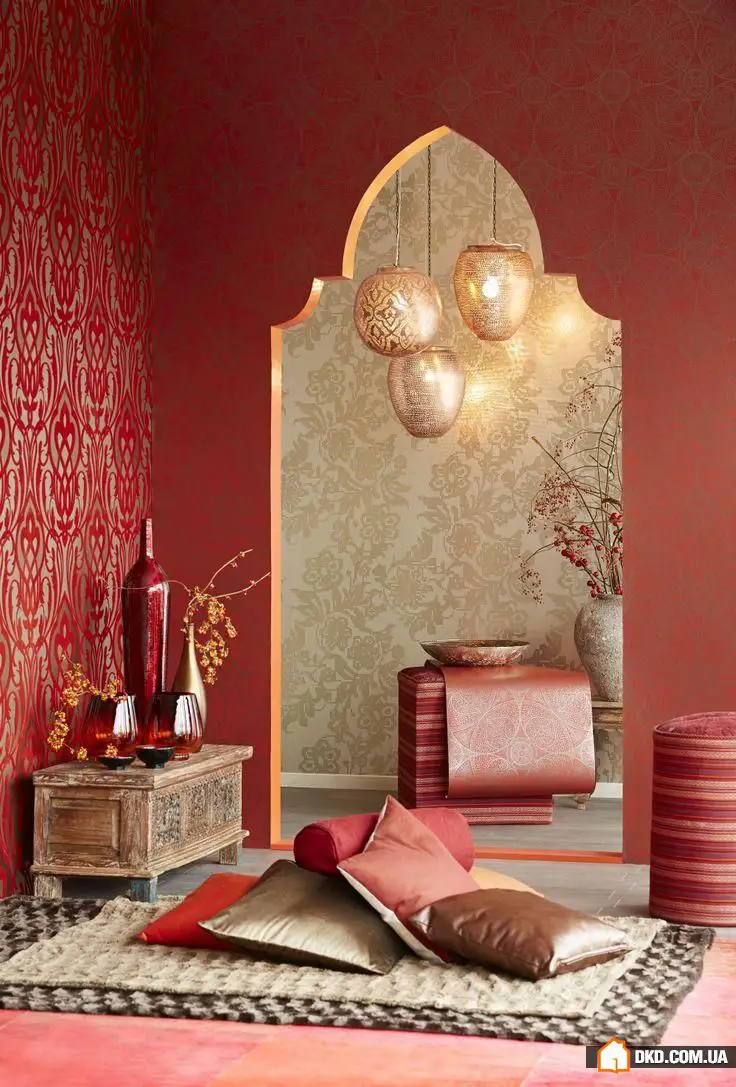
4. Lace Motifs
Moroccan style is a synthesis of several styles, and one can even say it has multiple branches. One of them, Berber influence, speaks in the language of primitive and naive patterns resembling Christmas trees, crosses, rhombuses, and grids. These motifs are usually used in textiles, such as carpets and rugs.
The other side of this style, of Arab origin, includes numerous intricate patterns, the complexity of which reaches unimaginable limits. Nevertheless, all of them are subject to overall symmetry and harmony principles, making them look light and effortless. Lace patterns appear in floor tiles, mosaics, wall paintings, and furniture; these prints decorate various panels, dishes, and bedheads.
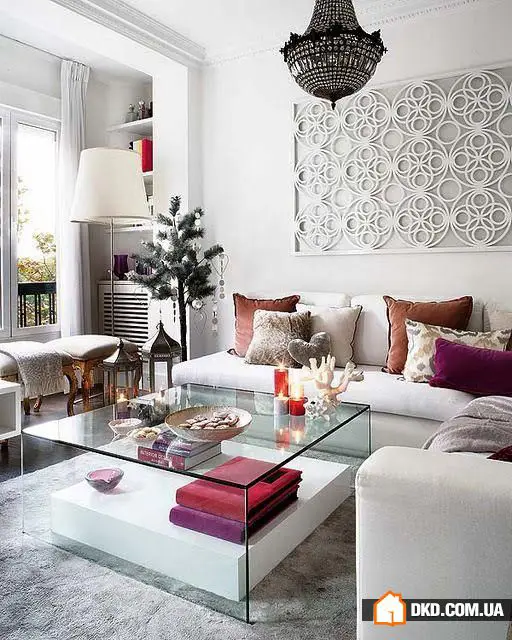
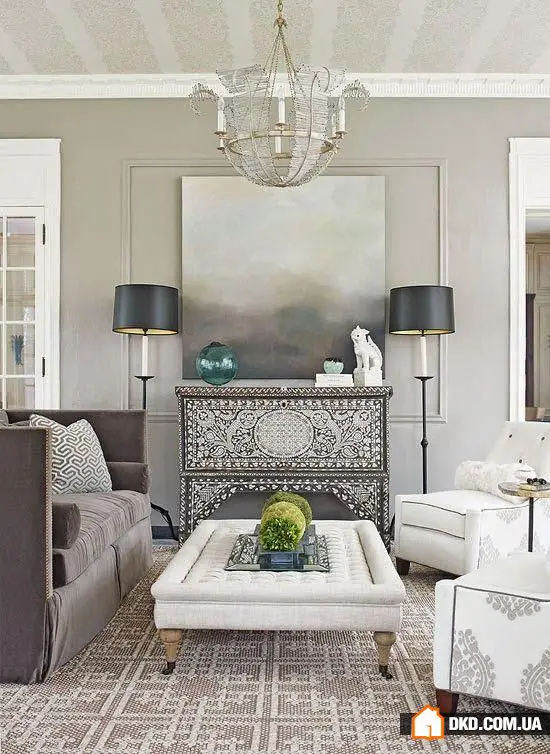
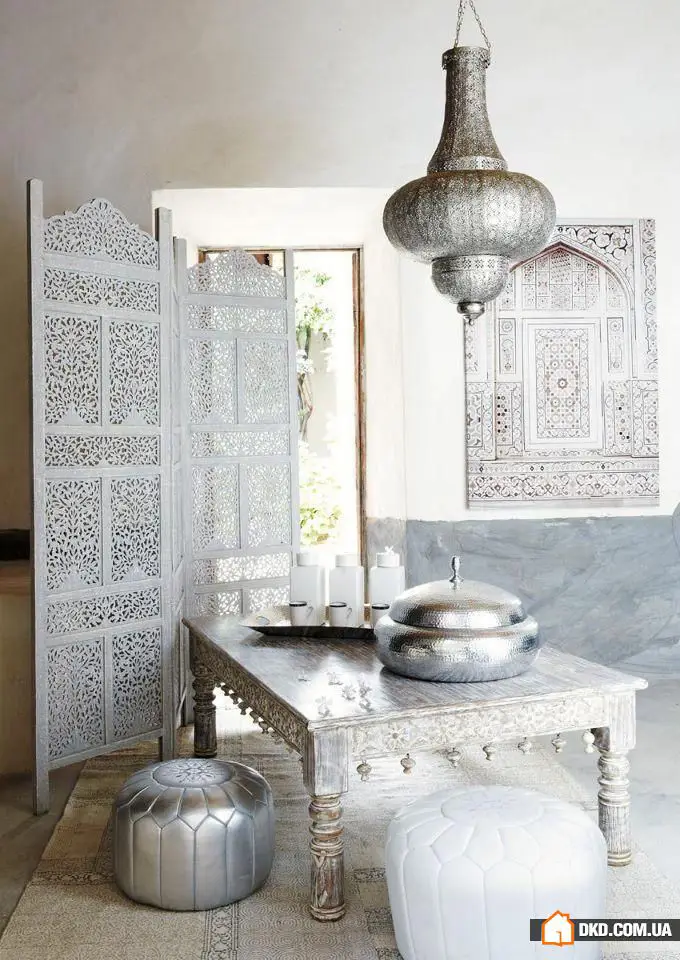
5. Vibrant Palette
The main colors of the vibrant Moroccan style are purple, turquoise, orange and all their shades and combinations. These colors set the tone, so adding silk cushions in these tones to a calm monochrome interior is already a direct hint towards Moroccan theme.
Decor in Moroccan style is unthinkable without numerous cushions of various shapes, colors, and patterns; vertical textiles – curtains or draperies – are usually monochromatic.
Special place in Moroccan decor is occupied by suspended and floor-standing lamps made of brass and colored glass. Chandeliers, wall sconces, and lanterns have figurative outlines (spheres, cones, cylinders) and many small details in execution. Complex patterns on the lamps refract light, resulting in soft and diffused lighting. Their shape itself is a national treasure and pride of homeowners.
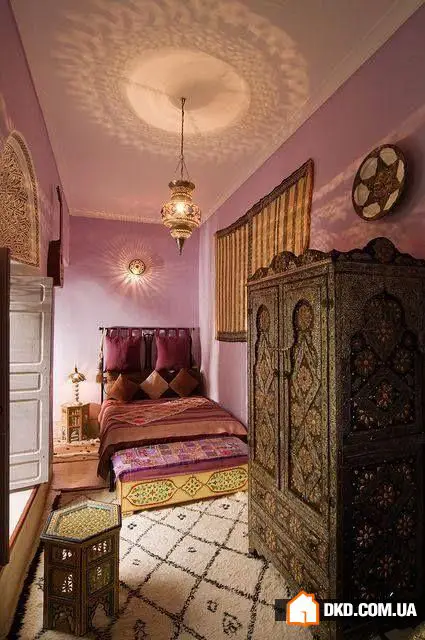
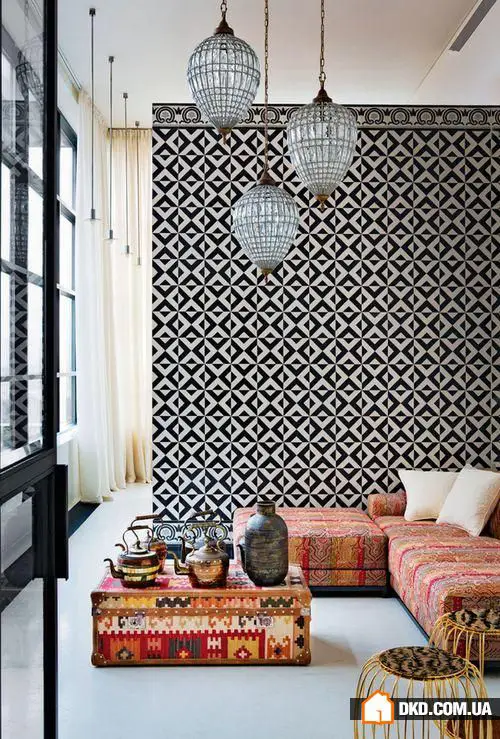
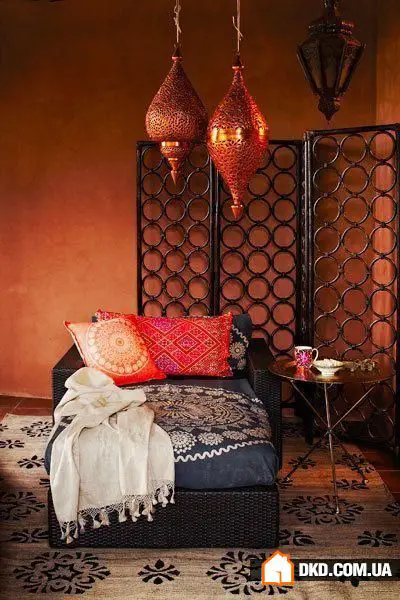
More articles:
 Inspired by Bedroom. 20 Modern Beds from Roche Bobois
Inspired by Bedroom. 20 Modern Beds from Roche Bobois How to Create a Welcoming Living Room: Real Example from Moscow
How to Create a Welcoming Living Room: Real Example from Moscow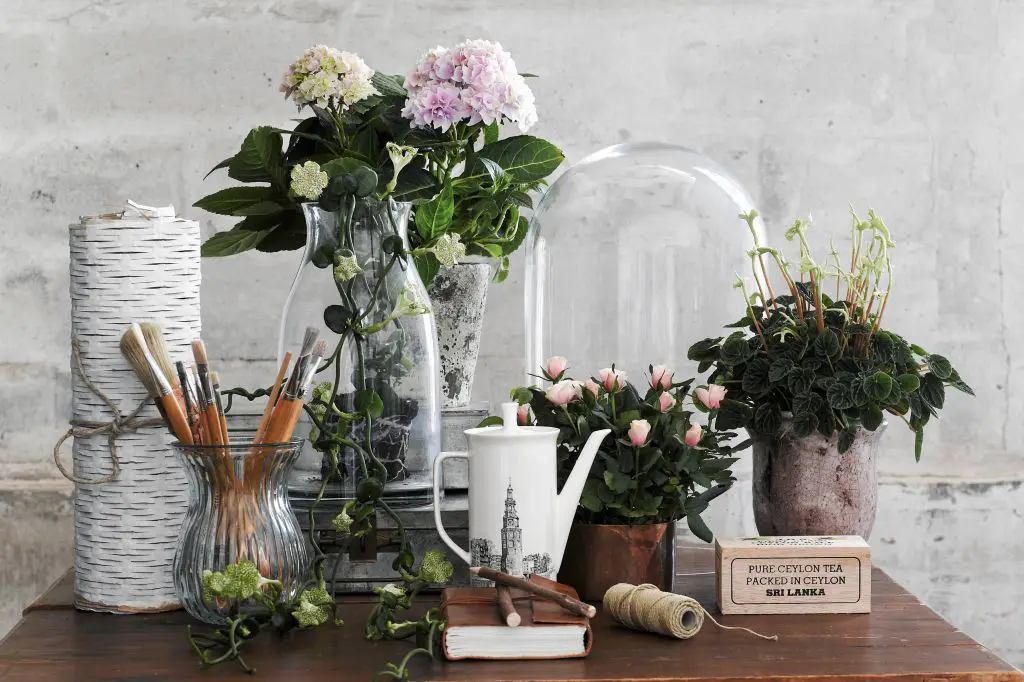 Flowers in Interior: 5 Original Ways to Green Your Apartment
Flowers in Interior: 5 Original Ways to Green Your Apartment Spring Prep: Doing a Deep Clean
Spring Prep: Doing a Deep Clean World of the Child: 6 Reasons to Decorate a Child's Room According to Feng Shui
World of the Child: 6 Reasons to Decorate a Child's Room According to Feng Shui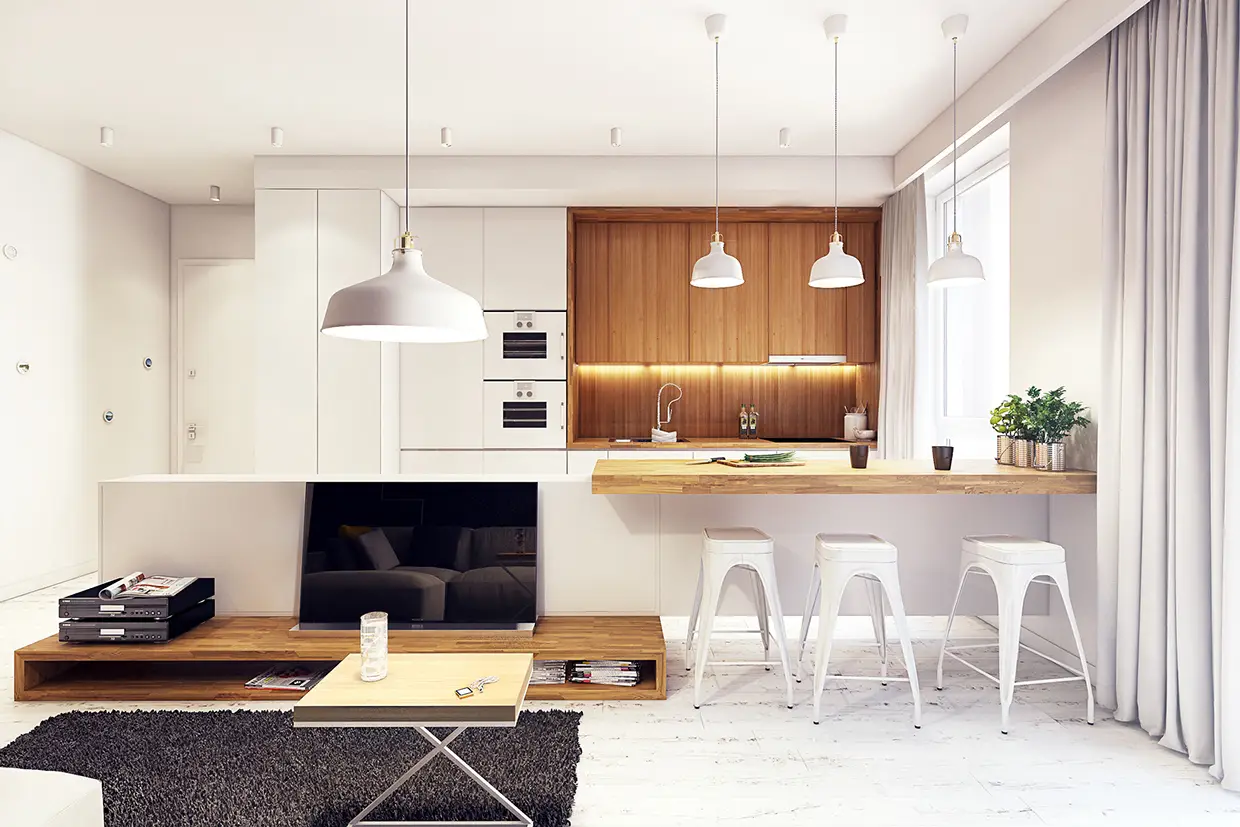 Before the Light Bulb: 7 Common Lighting Mistakes
Before the Light Bulb: 7 Common Lighting Mistakes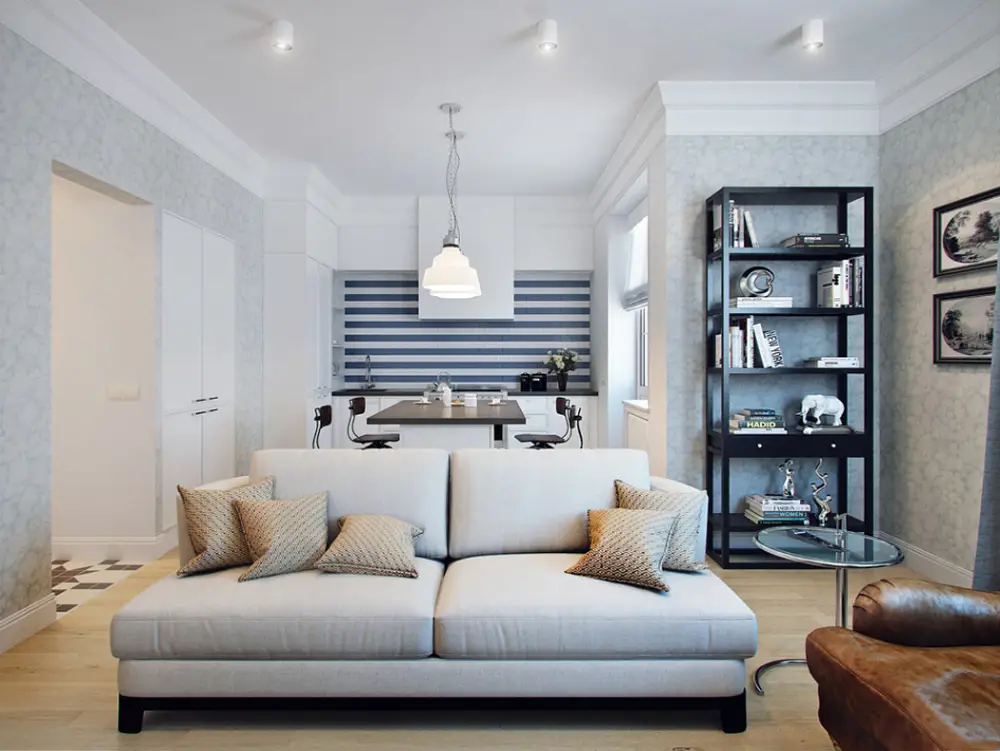 How to Visually Increase Apartment Area: 7 Winning Methods
How to Visually Increase Apartment Area: 7 Winning Methods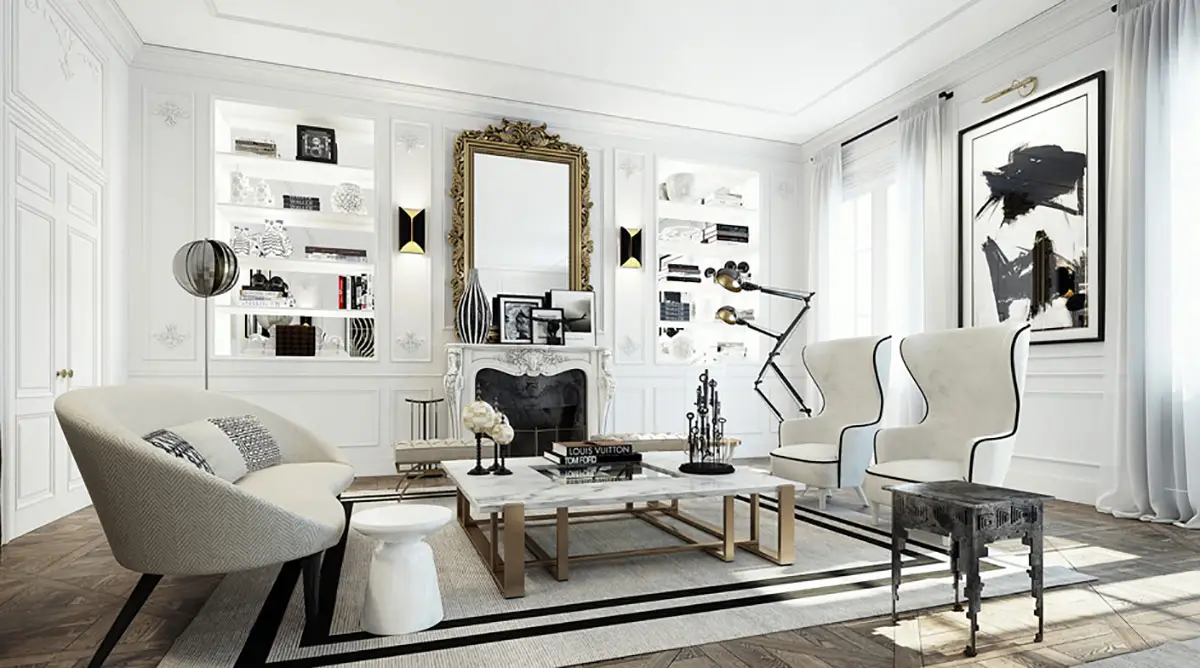 Art Deco in Interior Design: 5 Key Features
Art Deco in Interior Design: 5 Key Features